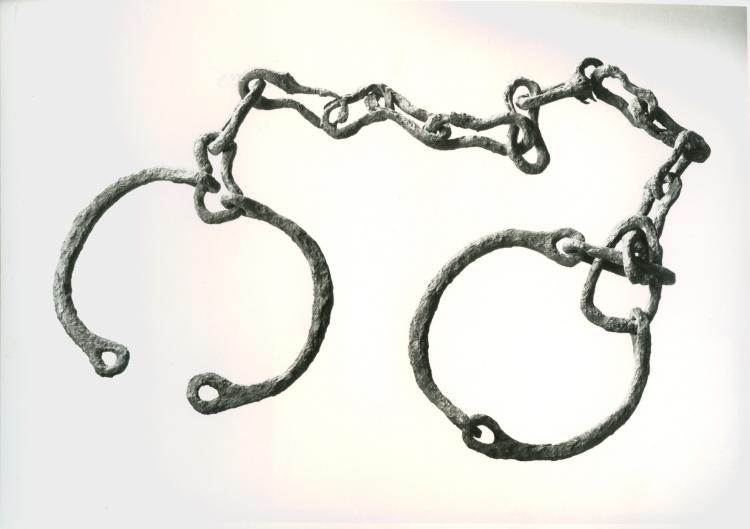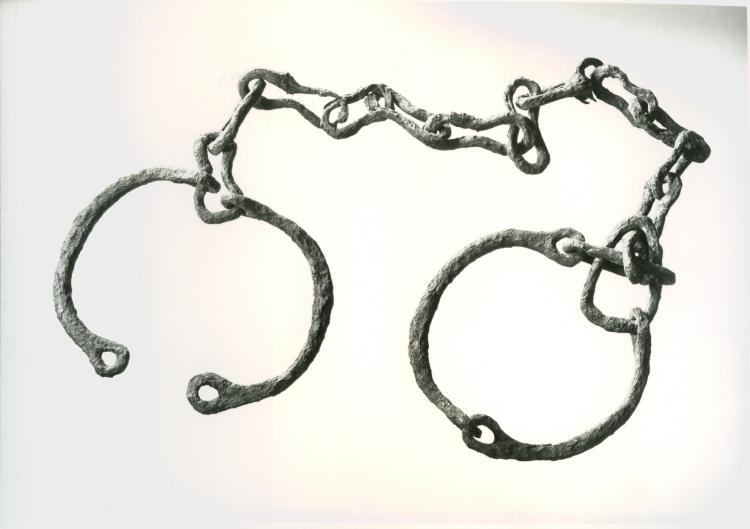These slave shackles were excavated at Bigbury Camp, Harbledown, Canterbury. Slave trade was a thriving business and they were often gathered by war lords during raids. The slaves would then enter the embedded economy and be used as gift exchange. Slaves were often exported to the Continent and when being transported they would have been shackled around their necks.
The geographer Strabo mentions slaves as being one of the major exports from Britain to the Roman world during the early 1st century AD. During the latter part of the Iron Age in Kent (550BC - 43 AD) the people of Kent were largely made up of the Belgae. These people mingled and settled with the earlier Celtic people and were probably recent invaders from the continent or refugees from the German or Roman invaders of Northern Gaul. The chains themselves despite being a symbol for oppression, also attest to the quality of Belgic metalwork.
Accession No: 1991-35/19 1991/35/20

